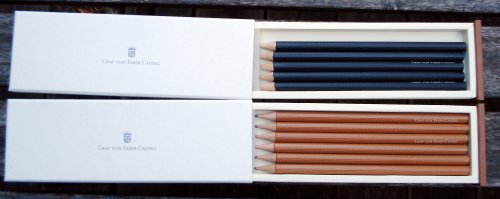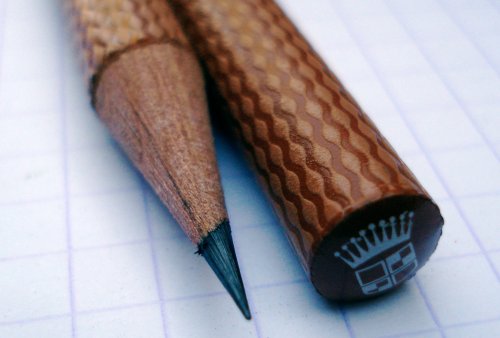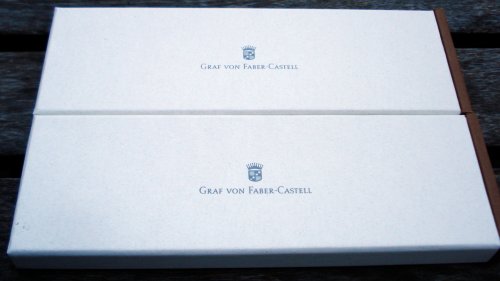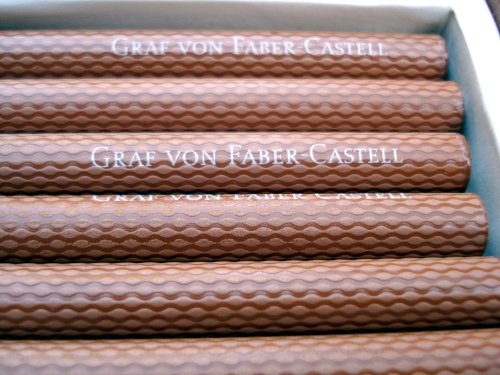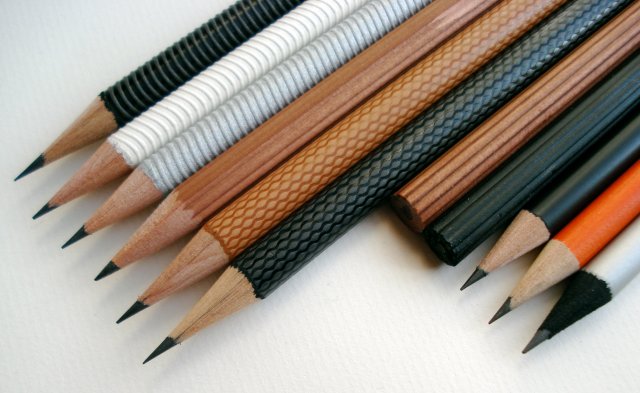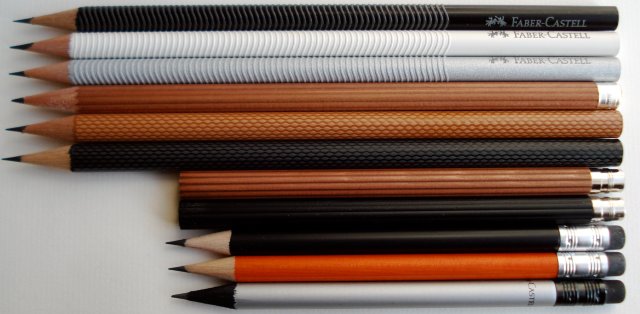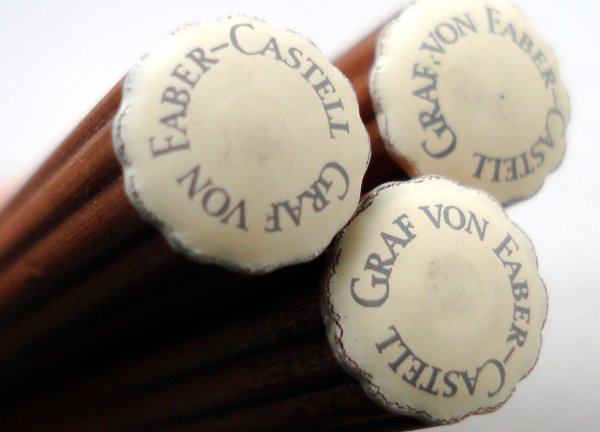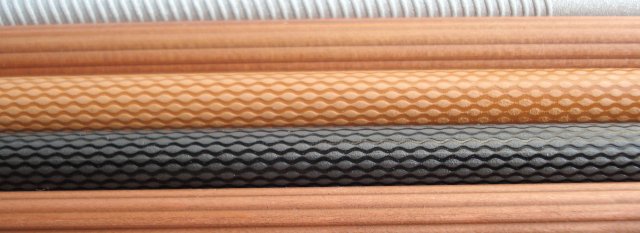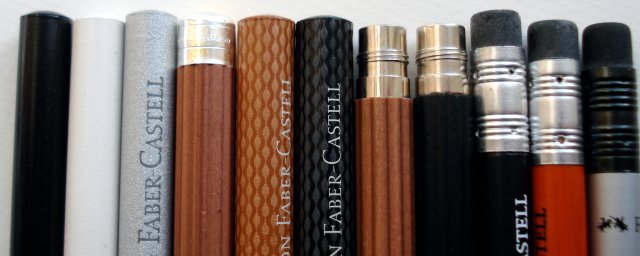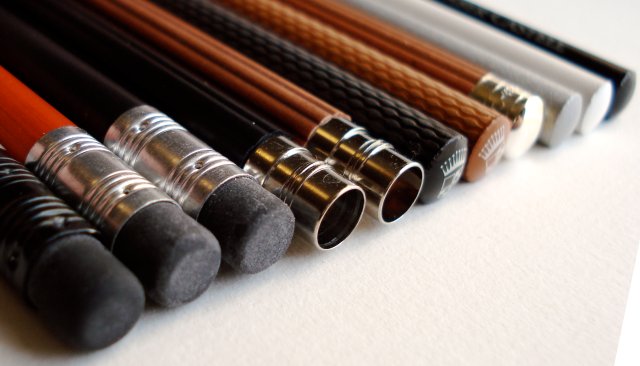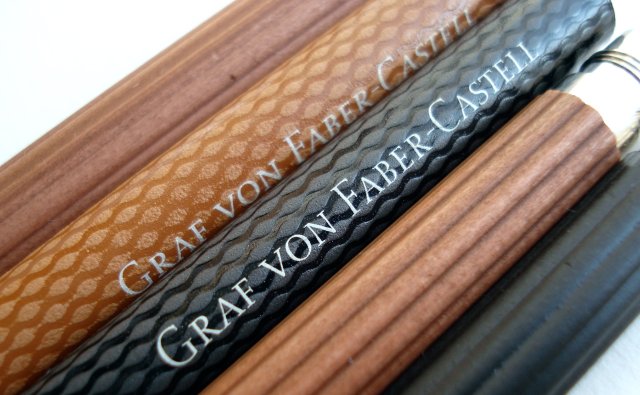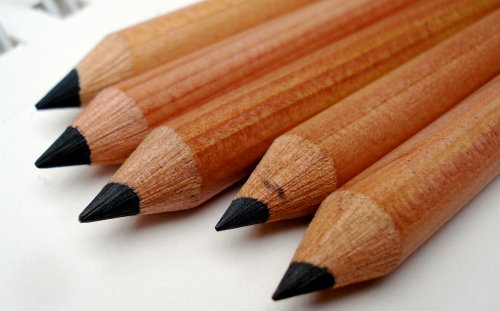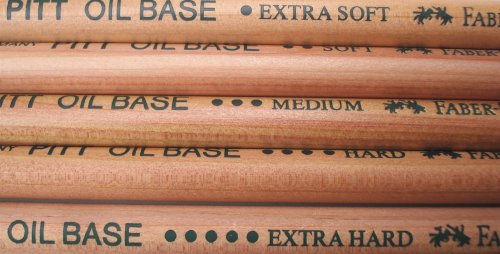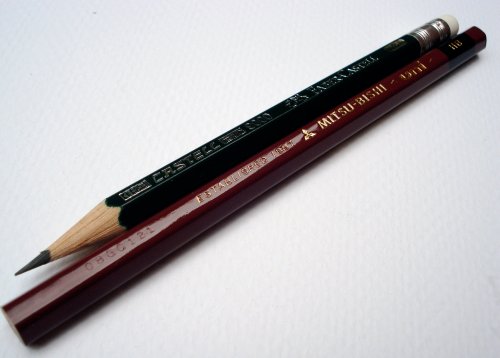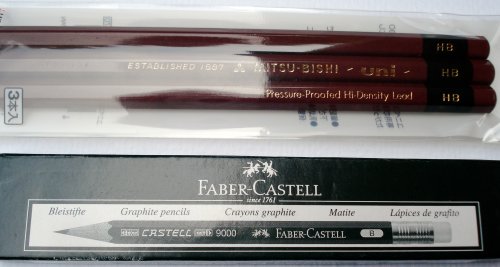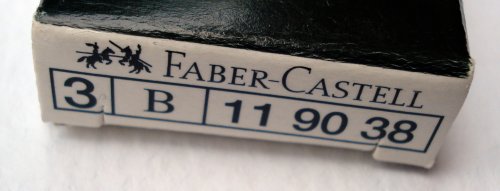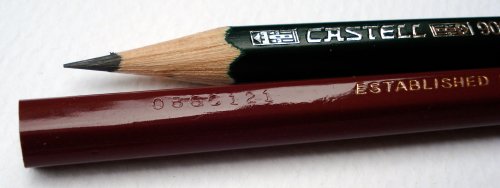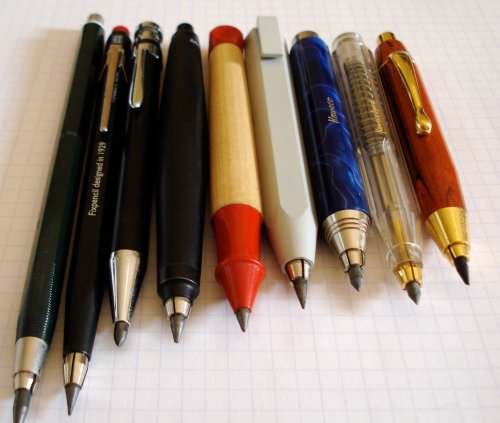
Interested in a great graphite writing and drawing experience that might use a less well known writing implement? How about the opportunity to use colour leads, or even a ballpoint pen with the same pencil? Let’s take a look at 3.15mm leadholders!
These pencils have a lead diameter that is about 50% thicker than the lead in a modern woodcase pencil, and is classified as a “wide” lead, with 3.15mm sitting in between 2.0mm and 5.6mm among the three major wide lead incarnations.
I have always liked the category – it provides a comfortable experience, and despite support from some major manufacturers, is a relative rarity in pencildom.

The pencils
The TK9400 from Faber-Castell is probably among the closest to being a pure drafting tool – a full length three-jaw clutch leadholder. It is comfortable to hold, and the dimensions remain the same as the lead wears down. The barrel is just a bit wider than that of most 2mm leadholders, which I like. It has a marking near the non-removable cap to indicate the lead grade. The intent is thus that one would acquire a series of leadholders, one corresponding to each grade in use.
The Caran d’Ache Fixpencil has been previously mentioned. A four-jaw clutch leadholder, it has a classic look, and features a removable cap with sharpener.
Next is something quite unusual – different retailers have different names for this pencil. It is marked “Japan”, but I don’t have definitive information on the manufacturer. It appears to be very solidly made, and is very attractive in a “less is more” sort of way. It is a mechanical pencil rather than a clutch leadholder, with a push button mechanism, and the cap advancing the lead. (The cap also unscrews to reveal a sharpener.)
Unfortunately, it has a serious flaw. I bought my pencil from a vendor who seems to think that a bubble wrap envelope suffices as packaging, so of course the lead was broken after the postal authorities had a few days with the package. Replacing the lead, I found that it wouldn’t take a standard 3.15mm refill. With a micrometer, I found that the supplied lead was 3.03mm in diameter, and the pencil’s tolerance wouldn’t allow use of a standard lead. What I needed were “Transotype Nobby Design Pencil 3mm Nachfüllminen/Spare Nibs”. (Spare Nibs?) Great, a no-name pencil using a proprietary refill that I can only get from overseas vendors. It is close to becoming a paperweight while being brand new. Who thought this up?
From Lamy comes the four-jaw Scribble. This may be the market’s pre-eminent 3.15mm leadholder. Solid (I had assumed it was metal until told otherwise) and with a modern design typical of Lamy, it is a functional product with superior design and aesthetics at a reasonable price. The body is a round bulb, with three flattended sections.
Also from Lamy, the abc is also a mechanical pencil rather than a clutch leadholder. Lamy has since switched to using 1.4mm lead, but I like this older model. The twist mechanism allows for both advancement and retraction of the lead! Though it is aimed at children, I can’t think of another wide lead pencil with this mechanism. If you’re aware of one, please leave a comment and share your knowledge.
The Wörther Shorty four-jaw clutch pencil has also been mentioned before. Compared with other writing implements, and based on the build quality, design, and inclusion of red, white, and soft graphite refills, I found the Shorty a reasonable price at $C25 to $29 at retail in Canada. (As I write this, $C1.00 = $US0.96.) What I’ve also noticed is that it sells or less than half that internationally. If you can get one for $10 to $15 – go for it, it is definitely a standout in that price range.
The Kaweco Acrylic and Sport Classic we’ve also mentioned before, here and here. The Classic has three jaws, and the Acrylic five. I’m mentioning the number of jaws as a mechanism variation between pencils, but can’t say that I notice any practical defference as an end user. Any other thoughts on this?
Since I wrote the Kaweco posts, I have to say that I’ve found the pencils to be fine for occasional use, but they are both too short for comfortable regular use. The Wörther has a body only slightly longer, yet that seems to make a major difference.
The Bexley Mini-Max was a response to the 5.6mm Multi-Max (which I’ve been meaning to write about for years now.) It is also a pocket pencil, and came in a tin with some interesting refills.

Other 3.15mm pencils
Faber-Castell and Caran d’Ache seem to be alone in offering drafting leadholder style pencils. Stabilo has a new product, the s’move, aimed at children. Koh-I-Noor, e+m Holzprodukte, Kaweco, and Wörther all have additional offerings. At the high end, Delta and David Hayward Designs both have some amazing products. (Write to David directly – the 3.15mm products are not displayed on his website.)
Refills
I’ve had queries about these refills. Unfortunately, choices are few. Thanks to the success of the Scribble, Lamy’s M43 refill – a package of three – is probably the easiest to find. There is also the M42 colour set – one each in red, green, and blue. Wörther also offers a variety of refills – the red and white ones that came with my Shorty are very high quality, and I’d like to try some of their other colours.
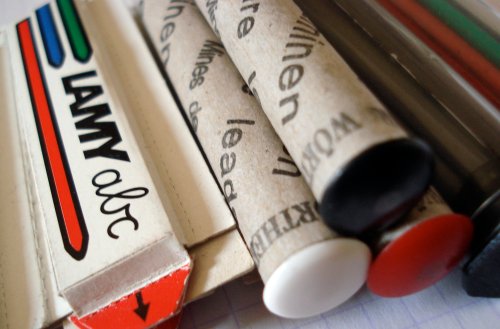
For full 60mm length refills, Faber-Castell and Caran d’Ache seem to be the last two suppliers.
Finally, there is a manufacturer of both colour and graphite refills whose products seem to be resold under various labels, though I don’t know the original manufacturer. They are typically sold in round or rectangular plastic tubes.
Unfortunately, this small number of sources seems to mean high prices. I’ve see online prices of up to three dollars per lead! I’d recommend looking around first.
An alternative
Bexley deserves some credit for selling a very interesting accessory (I don’t know if they are the creator or not) – they have taken a ballpoint mini-refill and attached a plastic collar, making the diameter 3.15mm and thus grippable by any of these clutch pencils! You can convert from pencil to pen in seconds.
Sharpening
Sharpening can be done with a variety of instruments. The Staedtler 502 won’t work with this lead diameter, but the Gedess does.
If you’re willing to try something a bit different, maybe this unusual format might be for you?

